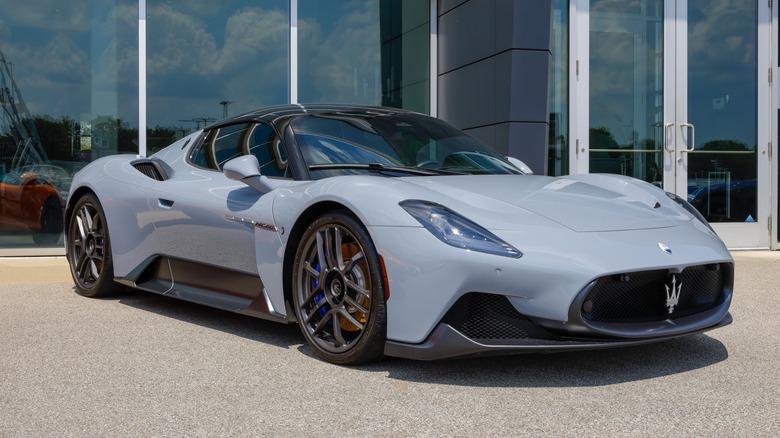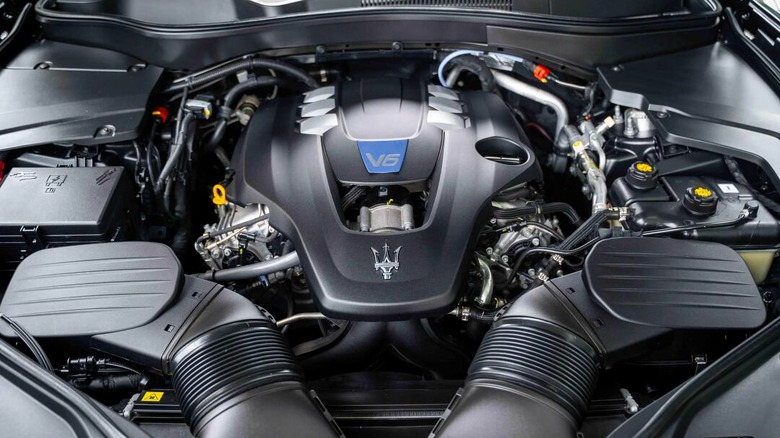Who Makes Maserati Engines? (No, It's Not Ferrari)
Over the years, Maserati, the Italian automaker symbolised by the Trident—has produced some of the world's most capable and breathtakingly gorgeous sports cars. After World War II, the brand transitioned from building pure-bred racing machines to crafting luxury sports sedans, supercars, and sports cars. Financial struggles in the early '90s eventually led Fiat to acquire Maserati, bringing it closer to long-time racing rival Ferrari. In time, Ferrari purchased a 50% stake in Maserati, sparking one of the most fascinating partnerships in Italian motoring history.
Today, things look very different. Maserati is now part of Stellantis, while Ferrari is riding its own horse, meaning the two no longer share engines like they used to. That said, Maserati has been busy developing its own powertrains. Currently, the lineup revolves around two engines. The first is a 2.0-litre turbocharged Multiair four-cylinder with mild-hybrid assistance, producing up to 330 horsepower in the Grecale Modena. Built at FCA's Termoli plant in Italy and further refined in Modena, it underpins Maserati's push toward efficiency without sacrificing performance.
The crown jewel, however, is the 3.0-litre Nettuno V6. It features a 90-degree bank angle and Formula 1-inspired pre-chamber combustion technology; the Nettuno V6 makes up to 631 horsepower in the MC20 GT2 Stradale, Maserati's most track-focused offering to date. Unlike previous engines, the Nettuno V6 is designed and built entirely in-house at the historic Viale Ciro Menotti plant in Modena. The Nettuno borrows from Alfa Romeo's twin-turbo V6 found in the Giulia Quadrifoglio, which itself is essentially a Ferrari V8 with two cylinders chopped off. So even with Nettuno engine now built fully in-house, Ferrari DNA still trickles through, and that's no bad thing, given Ferrari's reputation for crafting some of the most charismatic and exotic engines in the world.
Where are Maserati engines manufactured now?
Maserati's story took an interesting turn when fifty percent of the company was sold to Ferrari. The Ferrari-Maserati partnership itself was short-lived but hugely influential. Until recently, most Maserati engines were actually made by Ferrari under a contractual obligation that ended in 2019.
The first collaboration effort came with the award-winning Ferrari-Maserati F-136 engine, which debuted in the Maserati Coupe, a 4.2-litre naturally aspirated V8 producing 390 horsepower. A high-revving, much more powerful version of this engine later powered the Ferrari F430 and the 458 Italia. A larger, more powerful 4.7-litre version found its way into the Maserati GranTurismo and the Maserati Quattroporte, although it wasn't as powerful as the Ferrari's V8. Ferrari's strategy was to position Maserati as a luxury carmaker producing comfortable sports cars, while Ferrari itself remained focused on uncompromising high-performance machines.
In some cases, the partnership went further than just sharing engines. Take the Ferrari Enzo and the Maserati MC12; they were nearly identical. The MC12 featured a different aero package, revised bodywork, and a slightly detuned version of the 6.5-litre V12 from the Enzo. Only 50 road cars were built, serving as homologation specials, as the MC12 was designed primarily for racing. In 2005, Fiat reorganized and handed Maserati over to Alfa Romeo, effectively ending the Ferrari-Maserati marriage. The last Maserati model to feature a Ferrari-derived engine was the Ghibli Trofeo, powered by a 3.8-litre twin-turbocharged V8. What's more, with Alfa Romeo and Maserati enjoying a close relationship, speculation suggests that the upcoming replacement for the Alfa Romeo Giulia and Stelvio could be powered by the Nettuno V6.

